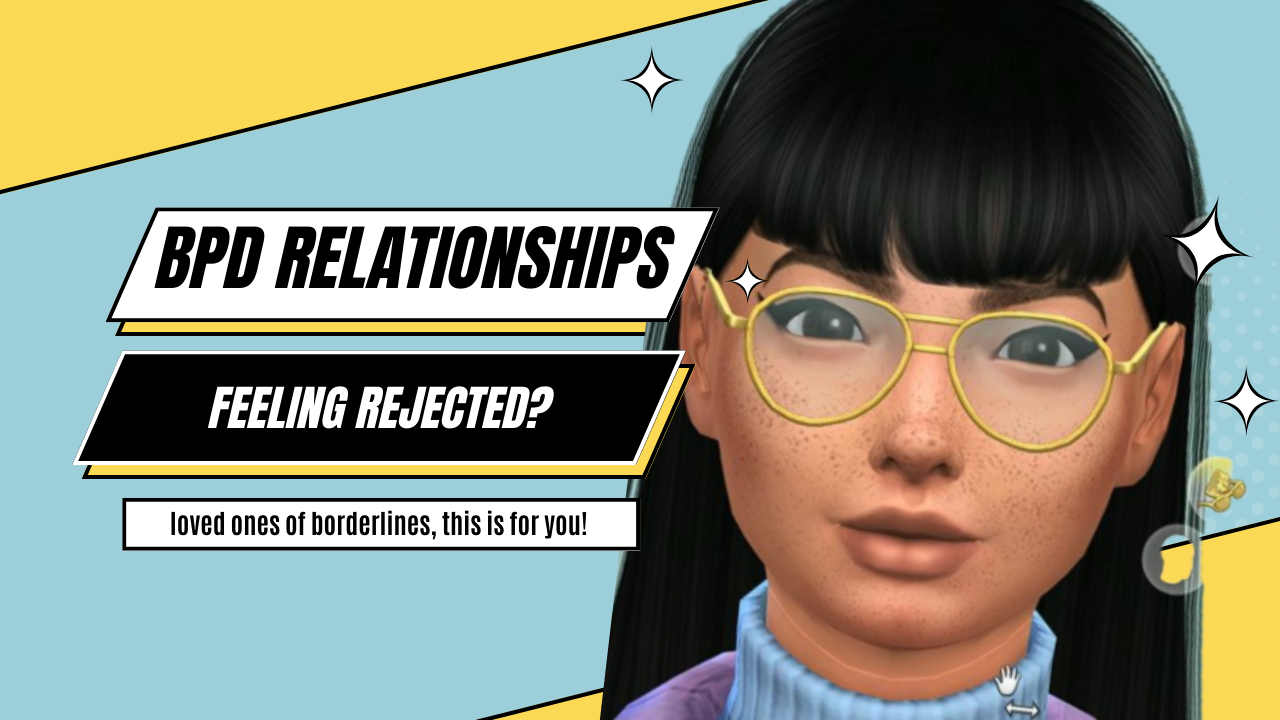Navigating Rejection Sensitivity
As someone with borderline personality disorder (BPD), the realm of relationships is like riding a rickety roller coaster.
Picture this: I'm all about that warm and fuzzy feeling of deep connection, but at the same time, I've got this nagging fear of being rejected lurking in the shadows even when there's no real threat. This push and pull dynamic is a whirlwind. I’m often sending mixed signals on autopilot, leaving loved ones scratching their heads.
BPD and Rejection Sensitivity
A downside to BPD is that we have a tendency to misinterpret even the most neutral interactions.
Imagine this: You're strolling down the street, and you catch a glimpse of a passerby's face – a face that holds no particular emotion. However, that expression is instantly transformed into a mask of untrustworthiness. Why? Well, we happen to be wired to be more sensitive to the lurking possibility of rejection. Even when all signs point to safety and connection, our mind sounds the alarm bells, anticipating the rejection that may never come. As a consequence, I am quick to distance myself or prematurely end relationships based on false assumptions.
Cognitive Distortions in Borderline Personality Disorder: Spotting Mind Reading and Black-and-White Thinking
The fear of rejection has been a constant companion through the twists and turns of life, but one powerful tool is self-awareness. By familiarizing myself with cognitive distortions, those cunning tricks our minds play on us, I can spot when I'm falling into traps. Mind reading, where I assume I can decipher the thoughts of others, and black-and-white thinking, where I see things as either perfect or catastrophic – these are just a couple of the sneaky distortions I stay vigilant about.
Once I've identified these distortions, I step back and assess the situation. It's like taking a breather during a demanding hike, surveying the landscape and carefully considering my next move. I then gain the ability to choose how I respond, rather than react impulsively and potentially confuse my loved ones.
It's not merely about overcoming fears and challenges. It's about cultivating intentionality in our actions. Instead of being swept away by my knee-jerk reactions, I strive to be the captain of my own ship. With each conscious choice, I aim to bring clarity and understanding to the intricate dance of relationships, sparing my loved ones from unnecessary confusion.
Overcoming Push-Pull Dynamics in BPD
While self-awareness is a powerful tool, overcoming Push-Pull Dynamics in BPD requires a multi-faceted approach that goes beyond just self-awareness.
Dialectical Behavior Therapy (DBT): DBT is a widely recognized therapy approach for individuals with BPD. It provides specific skills and techniques to manage intense emotions, improve interpersonal relationships, and regulate reactions to triggers. Through DBT, individuals can learn to identify and challenge cognitive distortions by replacing them with more balanced and realistic thoughts.
Emotional Regulation: This involves recognizing and understanding one's emotions, identifying triggers, and implementing healthy coping mechanisms. Techniques such as deep breathing, grounding exercises, and mindfulness can be valuable tools in managing intense emotional states and preventing impulsive reactions.
Effective Communication: Clear and open communication is crucial in navigating relationships with BPD. Expressing emotions, needs, and boundaries in a respectful and assertive manner can foster understanding and reduce misunderstandings. Learning effective communication skills, such as active listening and using "I" statements, can enhance relationships and reduce the likelihood of unintentionally pushing others away.
Building a Support Network: Surrounding oneself with understanding and empathetic individuals who can provide support and validation can help counteract the fear of rejection. Support groups, therapy, and trusted friends or family members can offer a safe space to share experiences and learn from others facing similar challenges.
Self-Compassion and Self-Care: Practicing self-compassion and prioritizing self-care can contribute to emotional well-being and stability. Engaging in activities that bring joy and relaxation, practicing self-care routines, and acknowledging personal strengths and achievements can help cultivate a sense of self-worth and reduce the need for external validation. In turn, developing a positive and nurturing relationship with oneself can contribute to more balanced and fulfilling relationships with others.
Remember, this journey is not linear; it's a long-haul adventure that demands your unwavering dedication and relentless practice. By integrating these strategies and approaches into your life, you can cultivate healthier and more fulfilling relationships while navigating rejection sensitivity in BPD.
Sources:
Miano, Annemarie, et al. “Rejection Sensitivity Is a Mediator Between Borderline Personality Disorder Features and Facial Trust Appraisal.” Journal of Personality Disorders, vol. 27, no. 4, 2013, pp. 442-456. The Guilford Press, https://guilfordjournals.com/doi/epdf/10.1521/pedi_2013_27_096
